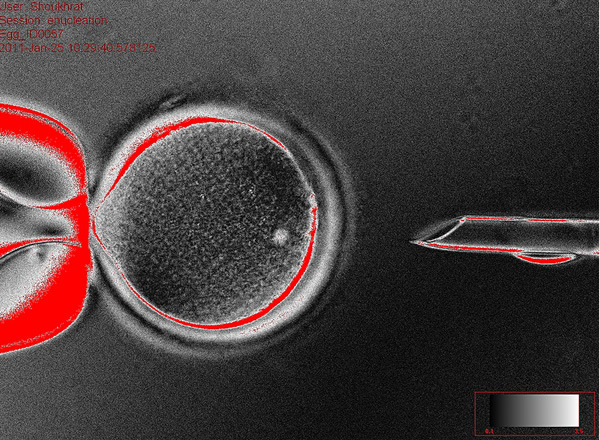
Donor egg held by pipette prior to nuclear extraction.
OHSU cell biologist Shoukhrat Mitalipov led a team of 23 scientists who methodically culled the lessons learned from stem cell research on amphibians, mice and rhesus monkeys — as well as from the abundant failures of others in the field. They devised a welter of new techniques to use the DNA of a fully formed skin cell in its most primitive embryonic form. [...]Some hailed the development as an important advance in the paving the way to treat a range of diseases, but others feared that it's one step closer to cloning humans.
In past efforts to coax such an assemblage of components to life, researchers have burned through dozens of donor eggs without getting any embryos even to the 16-cell stage at which stem cells become a remote possibility.
This time, the researchers said their methods were so efficient that they could create at least one embryonic stem cell line from each batch of eggs donated by 10 female volunteers. In one case, a single donor produced eight eggs of such exceptional quality that researchers were able to derive four embryonic stem cell lines.
Melissa Healy of the Los Angeles Times has the post: Here.

No comments:
Post a Comment